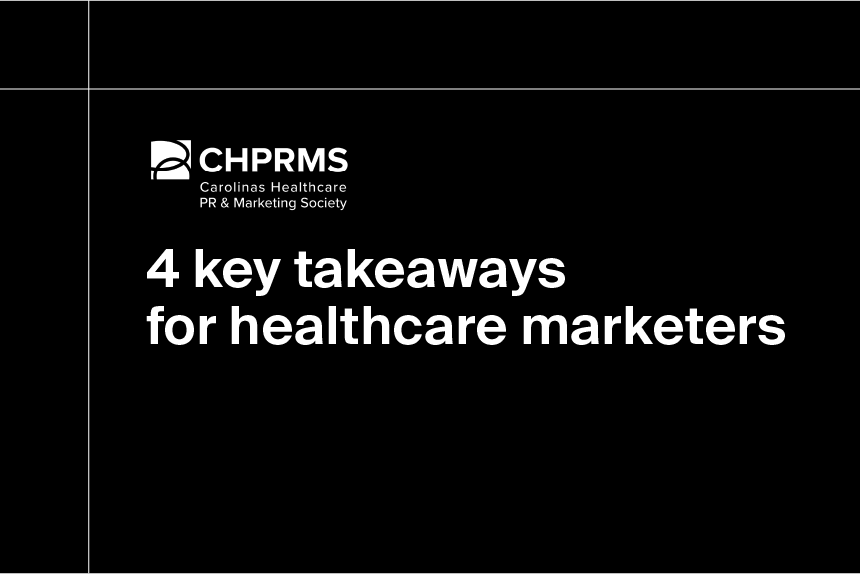Healthcare professionals (HCPs) are busier than ever. Between seeing patients, managing administrative tasks, and keeping up with new research and medical breakthroughs, they have limited time and attention to engage with brand outreach.
To break through the noise, companies need to do better than generic campaigns and jargon-filled emails. With the right data at your fingertips to show you the right places to look and which opportunities to prioritize, you can deliver personalized outreach that feels relevant and valuable. It’s the difference between being noticed and being ignored.
Let’s walk through how to create an effective, personalized HCP outreach strategy. Rather than taking a one-size-fits-all approach, we’ll share how to leverage data and insights to craft a tailored strategy, so your company can deliver the right message, through the right channel, at the right time.
Step 1: Define your strategic objectives
Every effective HCP outreach strategy begins with a clear, solid foundation. Before you dive into data or start creating loads of content, it’s important to set realistic, measurable objectives. Without a sharp definition of the goal behind the outreach campaign, your efforts to personalize can become an expensive guessing game.
If you’re reading this blog, you likely already have a primary business goal in mind, such as spreading awareness about a new product, increasing prescribing behavior, or closing knowledge gaps.
Equally important is defining success metrics or KPIs. Personalization is measurable. Will you track email open rates? Webinar attendance? Content downloads?
For example, let’s say a pharmaceutical company is launching a new diabetes medication. Their goal is to raise awareness of the drug among general practitioners and provide educational resources to drive first-time prescriber behavior. Success can be measured by a combination of attendance at educational webinars, clicks on articles about efficacy data, downloads of prescribing guides, and feedback from sales reps on perceived clinical readiness.
Establishing this foundation sets the tone for your personalization efforts. It helps marketing know what stories to tell, enables sales reps to align their outreach, and gives leadership a framework to evaluate ROI.
Moreover, strongly defined objectives means you can prioritize much easier. After all, you don’t need to personalize everything for everyone. You need to personalize the right things for the right audience, in service of the right goal.
Step 2: Gather high-quality, relevant data
The simple truth behind marketing to HCPs is that the better you know your physicians, the more effective you will be when engaging them.
To build that understanding, you need high-quality, relevant data. Start by centralizing the HCP data you likely have on hand. Pull from your CRMs, marketing automation platforms, field rep notes, and from third-party data providers to create a single source of truth.
Here’s the kind of data you want to include:
- Demographic and professional data: Specialty and subspecialty, years in practice, certifications, affiliations, and geography.
- Practice setting: Hospital-based vs. Private practice; rural vs. urban; and size of patient panel.
- Prescribing behavior: Treatment volumes, frequency, and therapy class familiarity.
- CRM and qualitative insights: Notes from calls, frequently asked questions, preferred contact style, and perceived openness to new therapies.
- Engagement history: Event attendance, event type, webinar participation, open rates on emails, video views, etc.
In our example, the pharmaceutical company integrates data from its CRM, website analytics, and data from third-party vendors (like Definitive Healthcare). They discover that some physicians are opening emails but not clicking through, while others are engaging deeply with video content. Field reps report that many HCPs remain unclear about how the new medication differentiates itself from existing options—a valuable insight that will shape the next step in the strategy.
Step 3: Segment HCPs strategically
Segmentation is where raw data transforms into actionable insights. As you know, the goal is to go beyond lists of names and to create groups of HCPs in ways that allow you to deliver relevant, timely, and differentiated content that aligns with your business objectives.
Start by identifying meaningful segmentation criteria based on what you know about your HCPs and what you need to achieve. This might include:
- Clinical specialty and subspecialty: Allows you to tailor clinical messaging (e.g., endocrinologists vs. general practitioners for a diabetes drug).
- Treatment or prescribing volume: Helps you prioritize high-impact HCPs for more intensive outreach efforts.
- Adoption behavior: Identify early adopters, majority prescribers, and skeptics, so messaging can match their position on the adoption curve.
- Practice setting and size: Differentiate messaging for large health systems, independent clinics, or rural practices with limited staff.
- Engagement history: Segment by responsiveness to previous campaigns.
- Referral patterns: Group HCPs who refer to the same specialists, so you can influence entire networks of care.
HCP segmentation should go beyond demographics to include behavioral and attitudinal factors. Consider psychographics: Is your audience motivated by clinical data, patient outcomes, or operational efficiency? Understanding these motivators allows you to frame your product as a solution to their unique pain points.
For our pharmaceutical company, they use their integrated data to build several core segments:
- High-prescribing endocrinologists who already understand diabetes therapies and seek nuanced comparative data.
- General practitioners and other HCPs who are familiar with diabetes but are hesitant to try a new medication and require confidence-building clinical tools.
- Early adopters who actively seek out innovative treatments, regularly engage with new clinical research, and are willing to pilot new therapies.
- Providers with low engagement or limited digital presence, who may need more traditional, sales-led outreach.
With this data, the company’s marketing team can then map each segment’s preferred channel mix to design a unique content journey for each audience group, which we’ll explain in the next section.
Step 4: Consider the right channels for HCP engagement
Channel strategy is where your segmentation work comes to life—matching the how of communication to the who of your audience.
The goal isn’t to be everywhere at once, but to be selective and intentional about the touchpoints that best suit each HCP segment. This approach not only improves engagement but also reduces marketing fatigue for physicians who are already bombarded with outreach from multiple brands.
When selecting channels, consider how the HCPs in each of your audience segments prefer to consume content. Some physicians may scan their inbox during quick breaks and appreciate a crisp, data-driven email. Others might prefer peer-to-peer education through webinars or lunch-and-learns where they can ask questions and discuss clinical evidence with colleagues. And others frequently use social media sites to talk about trends, challenges, industry news, and more. Time is important for all professionals, so it’s crucial to learn how and where each audience communicates so you can meet them there with the content they need.
Omnichannel vs. multichannel strategies
It’s also worth noting the difference between multichannel and omnichannel approaches. Multichannel simply means using several channels, while omnichannel ensures those channels are coordinated, consistent, and informed by shared data. In recent years, however, the benefits of adopting an omnichannel, customer-centric marketing strategy have become more obvious. Watch our on-demand webinar for more information on using omnichannel strategies to improve performance.
Step 5: Deliver tailored, insight-driven content
Once you’ve defined your objectives, gathered your data, segmented your audience, and selected the right channels, it’s time to bring your HCP personalization strategy to life through content.
Personalized content should do more than inform, it should engage, build trust, and move your audience closer to your defined objectives. The key is to ensure your content is both tailored (aligned to the HCP’s role, specialty, and pain points) and insight-driven (grounded in data and meaningful to their day-to-day practice).
To deliver 1:1 personalized content in a scalable way, consider modular content and dynamic landing pages. This way, you can serve HCPs the right combination of content without needing manually creating net-new assets each time.
Returning to our pharmaceutical company example, the marketing team builds three content tracks aligned with their segments:
- High-volume prescribers: Receive a series of short, data-heavy emails summarizing trial results, followed by invitations to download a full prescribing guide and attend a KOL-led webinar.
- Early adopters: Get access to case studies showcasing innovative uses of the therapy, video testimonials from peer physicians, and exclusive invitations to participate in a pilot program.
- Evidence-seeking professionals: Receive comparative analyses, cost-effectiveness data, and follow-up content that addresses common objections surfaced in conversations with sales reps.
Learn more
Building a personalized HCP outreach strategy isn’t a one-and-done exercise — it’s a living, evolving process. As new data comes in, your audience changes, and market dynamics shift, your strategy should evolve with them.
Continuously measure your performance, from email engagement and webinar attendance to prescribing lift and rep feedback. Use those insights to test new approaches, optimize your messaging, and refine your channel mix. The most effective organizations treat personalization as an ongoing practice, not a single campaign.
Ready to take the next step? Request a demo with Definitive Healthcare today to see how our data and insights can help you identify the right HCPs, prioritize the best opportunities, and deliver personalized engagement strategies that work.




